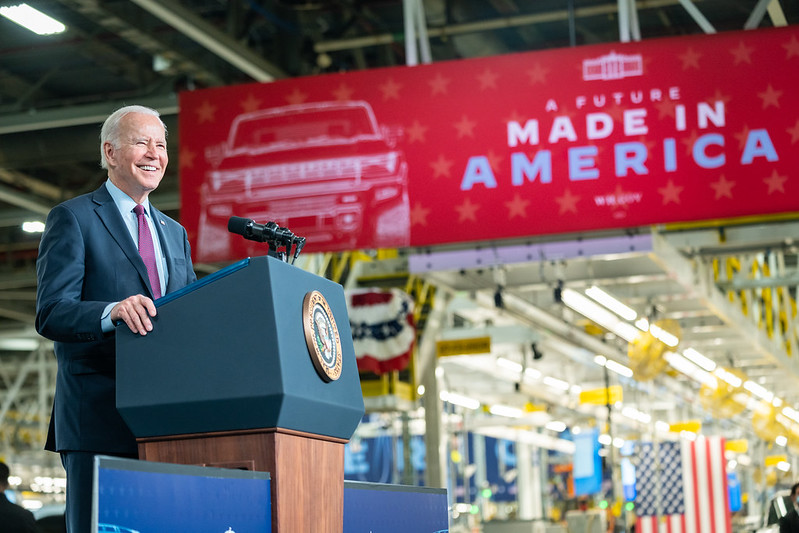
Infrastructure got a lot of attention when things were bad. But now that there’s good news, it’s not making headlines — but it should be.
Since President Biden signed the Bipartisan Infrastructure Law (BIL) in November 2021, nearly $454 billion in funding for 56,000 specific projects and awards across all 50 states has been announced, the White House said this past Monday as it launched Infrastructure Week.
Didn’t hear about it? We’re not entirely surprised, given all the news in trade this week. But the BIL is also chronically underrecognized.
Hands down, it’s a once-in-a-generation investment that’s giving America’s roads, bridges, public transit systems, airports, ports, drinking water, and more the radical update they need.
So far, the Biden administration has launched more than 165,000 miles of roads; 9,400 bridge repair projects; nearly 3,000 low- and zero-emission American-made transit buses; 300 airport terminal projects; 1,400 drinking water and wastewater projects. Yet, despite all of this, BIL projects tend to get lost in the noise more often than not. It’s a problem that has plagued the Biden administration from the start.
Indeed, a POLITICO-Morning Consult poll in April shows that the majority of U.S. registered voters “hadn’t seen, read, or heard anything about three of Biden’s four major spending laws.” Sadly, this aligns with our own polling conducted on our behalf by Morning Consult in June 2023, when only roughly a third of likely voters reported hadn’t seen, read or heard of new factories coming to their community (30%) and the United States (36%).
Frankly, it’s sometimes hard to believe that the public doesn’t see all the factory openings or major infrastructure projects that have rolled out over the past several years, but it’s not for lack of caring. That same June 2023 poll shows that a robust majority of Americans want the federal government to do more to bring manufacturing back to the United States (70%) and get tougher on China (70%).
Of course, the infrastructure law is just one facet of the Biden administration’s industrial investment agenda that’s transforming the American landscape and economy. Collectively, the BIL, the Inflation Reduction Act, the CHIPS and Science Act, and the American Rescue Plan will pour $1.6 trillion into the U.S. economy. With only a third of that massive sum deployed, more and more Americans can expect to see the benefits in their communities. But what’s already been invested is working. Since Biden took office, private companies have announced more than $866 billion dollars in investments in manufacturing and clean energy.
To remedy the public’s lack of recognition of the Biden administration’s industrial policy achievements, senior White House officials and Cabinet members have made more than 500 trips to herald the administration’s “Investing in America” agenda. But a new resource aims to help communities get a more local picture of how these investments impact them with new state fact sheets alongside national stats on Invest.gov. Check them out for a showcase of major infrastructure, manufacturing, and clean energy projects in your state.
Though Infrastructure Week has passed in years before the BIL with little to show for it, the BIL has delivered wins across the country and will continue to do so.
“While infrastructure week became an empty punch line during the prior administration, the Biden administration has committed to delivering infrastructure that will benefit communities for generations to come,” White House Deputy Chief of Staff Natalie Quillian told reporters in a briefing ahead of Infrastructure Week 2023.
